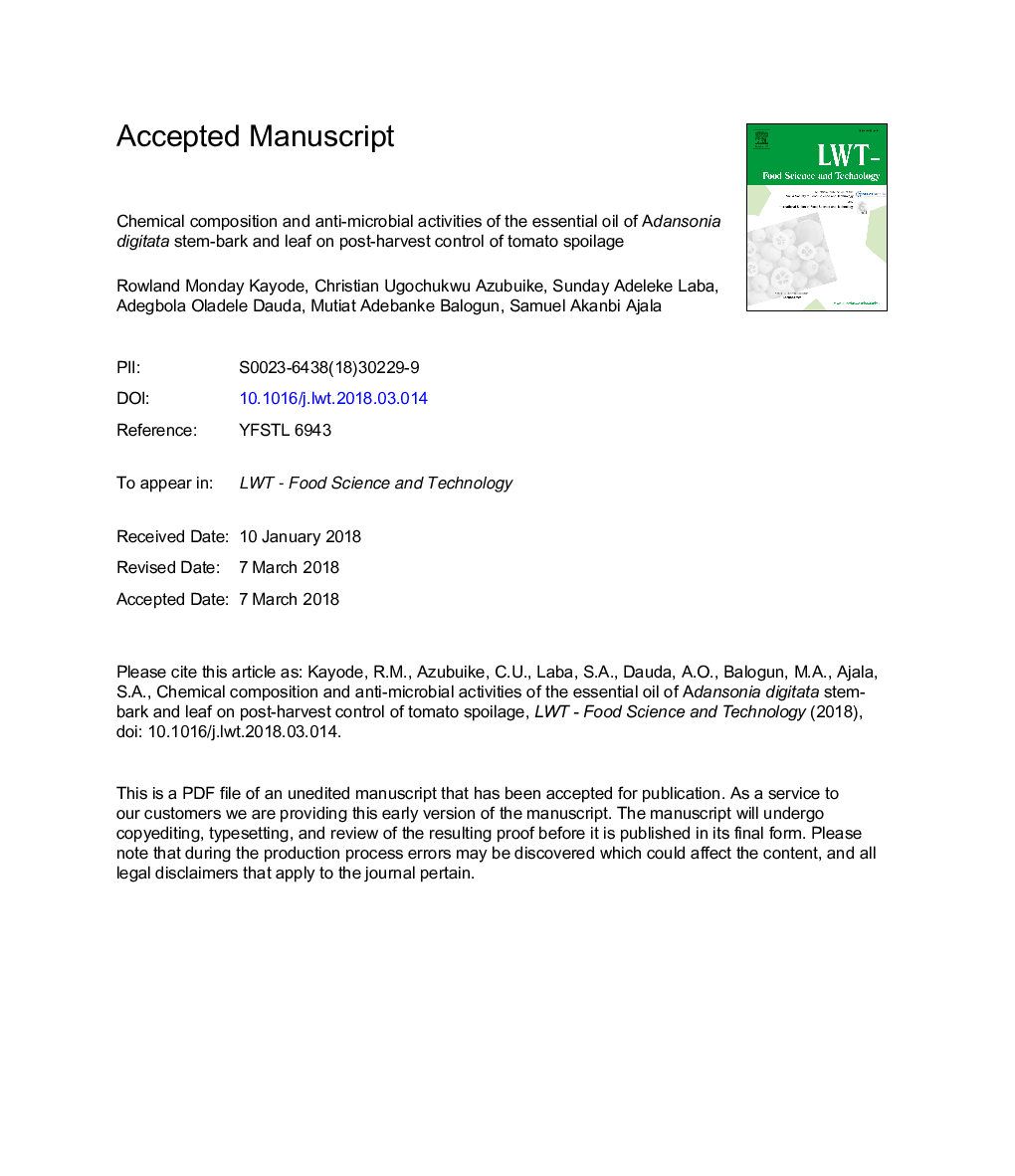| Article ID | Journal | Published Year | Pages | File Type |
|---|---|---|---|---|
| 8890909 | LWT - Food Science and Technology | 2018 | 35 Pages |
Abstract
The mirage of bioactive compounds in essential oil (EO) has raised its prospects as an alternative to synthetic chemicals preservatives. The yields of the hydro-distilled EO from the leaf and stem-bark of Adansonia digitata were: 0.302% and 0.403%; while identified compounds were: 23 and 40 respectively. The principal chemical constituents of the EO were: hydrocarbons, alkene alcohol, cyclic ketonic ether, terpenoids, amides, esters. Tetramethyl-2-hexadecen-1-ol (26.31%), 8-dimethyl-2-(1-methylethenyl) (8.20%), Tetracosan (6.54%), Heptacosane (5.81%) and Tetratetracontane (5.59%) were dominant compounds in the leaves EO. While, the major compounds of the stem-bark EO were: Octadecane (9.30%), Cyclopentane (8.81%), 1-Octadecanesulphonyl chloride (8.73%), Heptadecane (8.50%), Eicosane (8.34%), and Tetracosan (7.12%). The antimicrobial activity of the EO against post-harvest decay of tomato fruits stored at room temperature (27±2â¯Â°C) indicated significant (Pâ¯<â¯0.05) reduction of bacterial and fungal loads at 2000â¯ppm when compared with control. The lethality assay of leaf and stem-bark EOs showed significant toxicity against brine shrimps, with LC50 values of 1750â¯Î¼g/ml and 1932â¯Î¼g/ml respectively. These values were greater than 1000â¯Î¼g/mL as recommended index for non-toxicity in human. Thus, the study suggested application of the EO as possible antimicrobial agent as possible alternative to synthetic chemicals for the preservation of fresh tomato fruits.
Related Topics
Life Sciences
Agricultural and Biological Sciences
Food Science
Authors
Rowland Monday Kayode, Christian Ugochukwu Azubuike, Sunday Adeleke Laba, Adegbola Oladele Dauda, Mutiat Adebanke Balogun, Samuel Akanbi Ajala,
